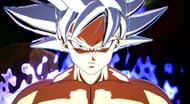Dragon Ball: Sparking! ZERO is one of the most anticipated games of the year that is set to release on October 11, 2024. As the latest installment in the popular "Dragon Ball" series, it promises fast-paced, visually stunning combat featuring all of your favorite characters.
Fans of the series are excited about the new game modes, improved mechanics, and high-quality visuals that bring the world of "Dragon Ball" to life in unprecedented detail. With the powerful Nvidia RTX 4060 and RTX 4060 Ti, you can experience the game at its full potential, provided you optimize your settings for the best performance and visuals.
This guide will help you get the most out of your Nvidia RTX 4060 or RTX 4060 Ti while playing Dragon Ball: Sparking! ZERO. By fine-tuning your Windows, Nvidia Control Panel, and in-game settings, you can achieve a smooth gameplay experience that balances performance and graphics quality.
Note: Many aspects of this article are subjective and solely reflect the writer's opinions. These settings are meant for PCs that meet the minimum (or recommended) specs recommended by the publisher.
Looking for Crossword hints & solutions? Check out latest NYT Mini Crossword Answers, LA Times Crossword Answers, and Atlantic Crossword Answers
Optimizing Windows for best performance in
Dragon Ball: Sparking! ZERO
Before diving into the game settings, you must first ensure that your Windows system is properly optimized. This will give your Nvidia RTX 4060 or RTX 4060 Ti the best chance to run Dragon Ball: Sparking! ZERO without performance hiccups.
- Disable Game Bar: The Windows Game Bar can cause performance issues for many games, including Dragon Ball: Sparking! ZERO. Unless you're using specific AMD Ryzen processors like the 7900X3D or 7950X3D, it's best to disable this feature.
- Enable Hardware-Accelerated GPU Scheduling: Under your Windows Graphics Settings, ensure that Hardware-Accelerated GPU Scheduling is turned on. This allows the GPU to handle more tasks and can improve both frame rates and overall smoothness during gameplay.
- Turn On Game Mode: Game Mode in Windows 11 helps allocate more resources to games. Enable this feature to ensure that your system prioritizes Dragon Ball: Sparking! ZERO when it's running.
Optimizing Nvidia settings
Next, you will have to adjust some key Nvidia Control Panel settings to maximize the performance of Dragon Ball: Sparking! ZERO.
- Low Latency Mode: Set Low Latency Mode to "On" to minimize input lag, ensuring quick response times during intense combat scenes.
- Power Management Mode: Set this to "Normal" rather than "Maximum Performance." This setting helps maintain higher boost clocks for longer periods, leading to smoother gameplay.
- Shader Cache Size: Increase the Shader Cache Size to 10GB or more if you have enough storage. This helps reduce stuttering by storing more cached data.
- Disable Nvidia Overlay: The Nvidia Overlay can consume system resources, potentially causing frame rate drops. It's best to turn this feature off.
- Monitor Refresh Rate: Make sure your monitor's refresh rate is set to its native setting in the Nvidia Control Panel, particularly if you're using a 144Hz or 240Hz monitor. This will prevent any unnecessary frame rate caps.
Best in-game settings for Dragon Ball: Sparking! ZERO

After fine-tuning your system and Nvidia settings, you can optimize the in-game settings for the best experience in Dragon Ball: Sparking! ZERO on your RTX 4060 or RTX 4060 Ti.
Unlock FPS: If you want to unlock your FPS, navigate to Local Disk(C:) > Users > username > AppData > Local > SparkingZero > Saved > Config > Windows. Open the Engine file and add the following commands:
- [/script/engine.engine]
- FixedFrameRate=165
- [SystemSettings]
- bUseFixedFrameRate=True
- bSmoothFrameRate=False
- FixedFrameRate=165
- FrameRateLimit=165.0
Adjust the FixedFrameRate value to match your monitor’s refresh rate.
- Window Mode: Use Borderless for smoother performance and reduced input lag.
- Resolution: Set the resolution to your monitor’s native setting (e.g., 1440p or 1080p) to ensure crisp visuals.
- V-Sync: Disable V-Sync to reduce input lag. If screen tearing occurs, enable G-Sync or FreeSync instead.
- Antialiasing Quality: Set this to "Off" or "Low" for a 7% boost in FPS, although this may slightly affect image quality.
- Shadow Quality: Set this to "Low" or "Off" for up to a 15% increase in FPS. For a balance between visuals and performance, "Low" is a solid choice.
- Texture Quality: For systems with more than 6GB of VRAM, "High" is the ideal setting. If you have less, choose "Medium" or "Low."
- Post Processing Quality: Set this to "Low" for sharper visuals and a 4% FPS improvement.
- Effect Quality: Keep this at "Low" to reduce the impact of special effects and improve performance by up to 5%.
- Depth of Field: Turn off Depth of Field for clearer visuals without any FPS loss.
- LOD Quality: Set to "Medium" for a 3% boost in performance. If you're struggling with FPS, "Low" may be a better option.
- Motion Blur and Camera Shake: Turn both of these off for clearer visuals and less disorientation during fast-paced action.
- Grass and Destruction Effect Quality: Lowering Grass Quality to "Low" can save around 1% FPS per setting bracket, while Destruction Effect Quality should be set to "Low" for performance or "High" for better visuals.
By following these tips and fine-tuning your settings, you’ll be able to experience Dragon Ball: Sparking! ZERO in all its glory on your Nvidia RTX 4060 or RTX 4060 Ti.
Are you stuck on today's Wordle? Our Wordle Solver will help you find the answer.
